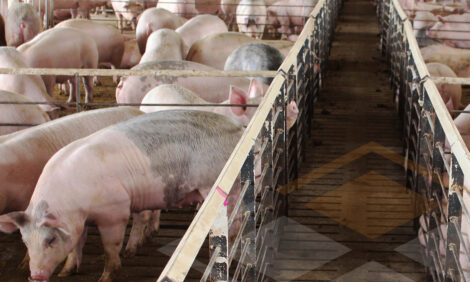



Using Genetics to Increase Litter Size and Survival of Piglets
CANADA - Over the past few decades, genetic selection for prolificacy in pigs has resulted in significant improvement in litter size at birth and at weaning.As this is a key way to improve overall efficiency of the production system, this trait is likely to continue as an important goal trait in most of the breeding programs around the world.
Even though increasing litter size improves sow production efficiency as a whole, this can have unfavorable effects on two counts, (a) performance of sow during lactation and (b) on birth weight distribution and survivability of piglets.
The complexities of sow performance during lactation due to increased litter size and how Genesus addresses these issues have been discussed in detail in a previous technical article http://www.genesus.com/global-tech-report/lactation-performance.
Another complication of larger litter size is the lower average birthweight of piglets and increased number of low birth weight piglets, i.e. higher birth weight variation. This is because of the fact that, the genetic selection aimed at higher litter size results in higher ovulation rates and increased embryonic survival without a concomitant improvement in the uterine capacity of sows.
In this article, we will be discussing the short term and long term implications of this low birth weight phenotype and the steps Genesus has taken to address this issue.
Many studies have shown that low birth weight piglets have decreased survivability and have lower growth rate during pre-weaning, growing and finishing phases.
A study published in 2006 by Rehfeldt and Khun has shown that low birth weight pigs grew slower and were fatter at slaughter when compared to their high birth weight litter mates. They concluded that low birth weight piglets reached a plateau of muscle fiber growth much earlier in life than high birth weight piglets and hence diverted more available dietary energy to body fat deposition. These studies show that producers suffer economic loss due to these low birth weight piglets.
In an ideal situation sows would have large litter sizes, fewer low birth weight pigs and uniform sized litter-mates, i.e. decreased litter size variation. A uniform litter at birth makes sow management during lactation easier and provides better returns due to the better performance during grow-finish.
All these point to the fact that, it is not just the number of piglets born alive that needs to be increased, but the quality and uniformity of the litter. In addition, improving lean growth rate to further offset the impact of low birth weight is important in developing maternal breeds.
Genesus has invested considerably in the genetic improvement of piglet quality, and thereby customer profitability. It is important to realize that piglet birth weight is mainly controlled by the sow and thus understanding the relationship between individual and litter birth weight is important.
Recording individual birth weight of piglets born in the maternal breeds (including stillborn piglets) has been routine for several years, and this is critical to understanding and identifying methods to increase the birth weight of lighter pigs while decreasing the within litter birth weight variation and maintaining an acceptable average litter birth weight.
An immediate effect of enhancing the piglet quality is the improvement in piglet survival until weaning. Understanding piglet survival and its’ relationships with piglet birth weight is important.
Genesus measures piglet survival over three distinct time frames. The first is prenatal/farrowing survival, which is defined as the number of still born piglets (excluding mummies), early survival calculated from the number of piglets alive after 24 hours of birth, and late survival, which is calculated from the number of piglets surviving from 24 hours after birth to weaning.
Prenatal/farrowing and early survival traits are influenced by the litter size at birth, and piglet birth weight . Hence genetic selection to improve those traits will also help to increase the viability of piglets and to attain larger, more uniform litters.
Understanding the genetic control and relationships among piglet birth weight and survival, along with the utilization of genomic methodologies for selection, will improve these traits, and Genesus customers will benefit by weaning larger and more uniform piglets leading to increased profitability.
References
Rehfeldt, C. and Kuhn, G. 2006, Consequences of birth weight for postnatal growth performance and carcass quality in pigs as related to myogenesis, Journal of Animal Science, 84. 113-123.
November 2015







